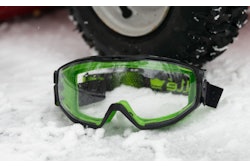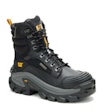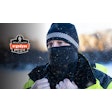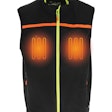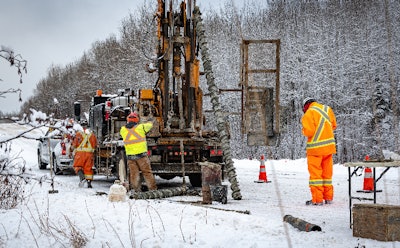
The choice of materials makes a difference in safety and comfort when it comes to construction work apparel. A significant factor is how the clothing material will fare during certain seasons, such as winter. Ideally, clothing material worn in the cold weather should keep heat in and moisture out.
While cotton provides comfort in warmer weather, it is not advisable to wear it in cold climate winter weather.
Properties of Cotton
Unlike wool or synthetic fabrics, cotton easily absorbs moisture through sweat and precipitation. As it evaporates, it further cools down the person wearing the cotton garment with the potential for chills and hypothermia. Material with moisture-wicking properties draws sweat away from the body, helping the construction worker keep dry and comfortable.
When wet, cotton loses its insulating properties. As such, it does not trap warm air close to the body, which is crucial for maintaining body temperature in cold weather. Once cotton gets wet, it takes a long time for it to dry out. The slow drying time may prolong the period during which a construction worker is exposed to cold and damp conditions.
Being stuck in damp, uncomfortable clothing throughout the work shift increases the risk of hypothermia, a potentially serious condition in which the body loses heat faster than it can produce it. Wet cotton can feel clammy and uncomfortable against the skin. Stiff, damp cotton can restrict movement and make it difficult to perform tasks on the jobsite.
In windy conditions, cotton offers little to no protection against wind chill, leading to a decrease in body temperature.
Consider footwear as well. When it comes to what type of socks to wear during winter construction work, experts advise against cotton, as is noted in this IRONPROS story.
Working in construction usually means wearing heavy, non-breathable boots/shoes and or steel toed or composite boots, which can cause feet to sweat, notes Elizabeth Scheiber, DPM, Department of Orthopaedic Surgery, Cleveland Clinic Weston (Florida) Hospital.
Wearing wet socks can lead to fungal infections, she adds.
Health issues that may arise include rashes, fungus, athlete’s foot and trench foot. The best sock materials for sweaty feet include antimicrobial merino wool, small fiber wool, bamboo or acrylic synthetic blends like polyester or nylon.
As for other workwear, if cotton is not advisable, what materials are best to wear on a cold weather worksite?
Learn More: Choose these materials for long-lasting construction work pants
Wool, Fleece and Synthetic Fabric
Clothing should retain one’s own natural body heat. Wool and polyester are the two main fibers that can repel moisture and retain warmth.
Wool – known for providing warmth – is unique in that it is water-resistant. It can absorb moisture vapor from the skin and release it out into the drier air, so the person wearing it doesn’t remain wet. Wool also is windproof.
Wool can be itchy for some people and can shrink if it is not properly maintained. Merino wool is considered soft and itch-free.
The tightly-woven fibers of polyester prevents moisture from getting through the fabric. Polyester material can fight off water either through a tight weave or a chemical coating deflecting water. It also is lightweight and breathable and can be comfortably worn in cold weather.
Other options include fleece, a synthetic fabric made from polyester that mimics the warmth and feel of wool but may not be as breathable.
Gore-Tex is a waterproof and breathable synthetic membrane that blocks wind and snow while allowing moisture to escape. Cordura is a nylon fabric known for its extreme durability and abrasion resistance and is considered ideal for workwear that needs to withstand tough conditions. Hemp material is a durable and sustainable fabric with favorable insulating properties. Although it can be stiff initially, it softens with wear.
In making the correct choice, consider factors such as the temperature – how cold is it expected to be on any given workday? Will conditions include rain, snow, wind, or any combination of these?
Will the activity level require moving around quite a bit or staying mostly stationary? Are there any allergies or sensitivities to certain materials? Another good strategy for winter workwear is layering. Use a moisture-wicking base layer to keep sweat away from the skin, an insulating layer for warmth and a waterproof and windproof out layer to protect against the elements.

